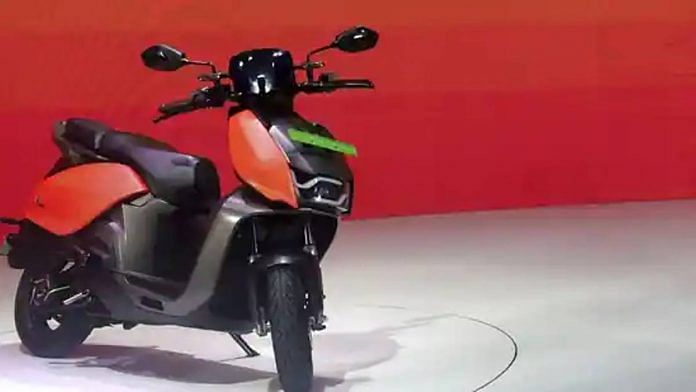New Delhi: Embroiled in a tussle with the Centre over the flagship FAME-II subsidy scheme, which mandates a certain amount of localisation for the manufacture of electric vehicles (EV), the Society of Manufacturers of Electric Vehicles (SMEV) has warned that “forced localisation” comes with the danger of usage of low-quality products that can “lead to fires”.
Under the FAME-II (Faster Adoption and Manufacturing of Electric Vehicles) scheme, introduced in 2019, the government offers subsidy to EV companies on locally manufactured vehicles. To be eligible for the subsidies, EV original equipment manufacturers (OEMs) must demonstrate that at least 50 per cent of the components in their vehicles are manufactured in India and locally sourced.
However, in April 2022, the Ministry of Heavy Industries started blocking subsidies to some OEMs after the government received “anonymous emails” alleging non-compliance with the localisation norms.
The EV industry has since been seeking reimbursement of unpaid subsidies which, according to the SMEV, “stand at Rs 1,400 crore over the last 15 months”.
In a statement issued Wednesday, Sohinder Gill, director general of SMEV and CEO of Hero Electric, said all OEMs prefer to buy locally — rather than import.
“Importation is an expensive and dicey affair with currency issues, customs and duty additions, time lag, delays, spare shortages, guarantee and warranty complications and above all, pricing is always cumulatively higher,” he explained, adding that “the idea that there was an attempt to profit from importation has no basis in reality”.
The statement was issued in response to reports that vehicle testing agency ICAT (International Centre for Automotive Technology) had given the clean chit to six electric two-wheeler manufacturers after probing complaints of the automakers bypassing localisation norms to avail of the subsidy.
The SMEV termed the action the “beginning of resolution of disputed issues for OEMs” that “augurs well for the sector”. Gill sought expedited resolution of all such pending cases.
Talking about the issue of localisation, he said that it “has been magnified to become a China-centric debate among some quarters”. “This myth must be debunked. Importation is allowed under FAME-II. That is the fact. Even today, 50 per cent of an EV is officially allowed to be made up of imported components,” he added.
He further pointed out that forced localisation comes with dangers, “as we have seen some OEMs trying to procure locally at the cost of quality components that have resulted in fires and short circuits and parts that have required to be recalled later”.
Gill also said that OEMs had been passing on subsidies “fairly and honestly” to the customers. “There is not a single case of any OEM not passing on the subsidy to customers. That is a fact and has not been challenged by anyone so far,” he said.
The statement added that “with the unfortunate controversy created by anonymous emails and the actions of the ministry, the entire (EV) sector collapsed in 2022”.
ThePrint reached the Ministry of Heavy Industries by calls and mails with queries related to the controversy surrounding the FAME-II scheme, but is yet to receive a response.
Also read: FAME-II controversy can scare off investors. India’s EV sector had just started to grow
‘Govt must help rehabilitate market leaders’
According to the SMEV, “the subsidy scheme was a non-starter”. “Then two years of Covid finished off the market and it is only in late 2022 that the supply chain could sustain the 50 per cent localisation efforts of the OEMs,” it added.
Appealing to the government, the SMEV said “the Ministry of Heavy Industries must now help to rehabilitate market leaders”.
“Companies like Hero Electric, Okinawa and Ampere who were market leaders in FY19 and FY20 with 82 per cent share of the market have reported drastic drop in sales and were able to muster only 24 per cent market share in April 2023,” it added. “If these companies are not revived, the organisations that built the EV ecosystem for the initial 10 years or more may have to shut down, setting a bad example in the EV world, including the global investment fund.”
“It is time that the sector is allowed to stand on its feet again and efforts to revive the e-mobility sector can begin… the sector was desperate for a resolution of the subsidy blockade that has all but choked the sector for the last 15 months,” the SMEV statement read.
Last week, in a petition to a Parliament standing committee, the EV manufacturers’ body said the non-payment of subsidies led to a “severe liquidity crisis in the industry” and alleged that “over Rs 1,400 crore worth of subsidies have been passed on by the OEMs to customers over the last 15 months from their own pockets”, adding that this had “turned OEMs into financiers for the government’s prized FAME-II subsidy scheme”.
(Edited by Nida Fatima Siddiqui)
Also read: India’s EV market is battling a subsidy controversy but Ather Energy determined to beat crisis



